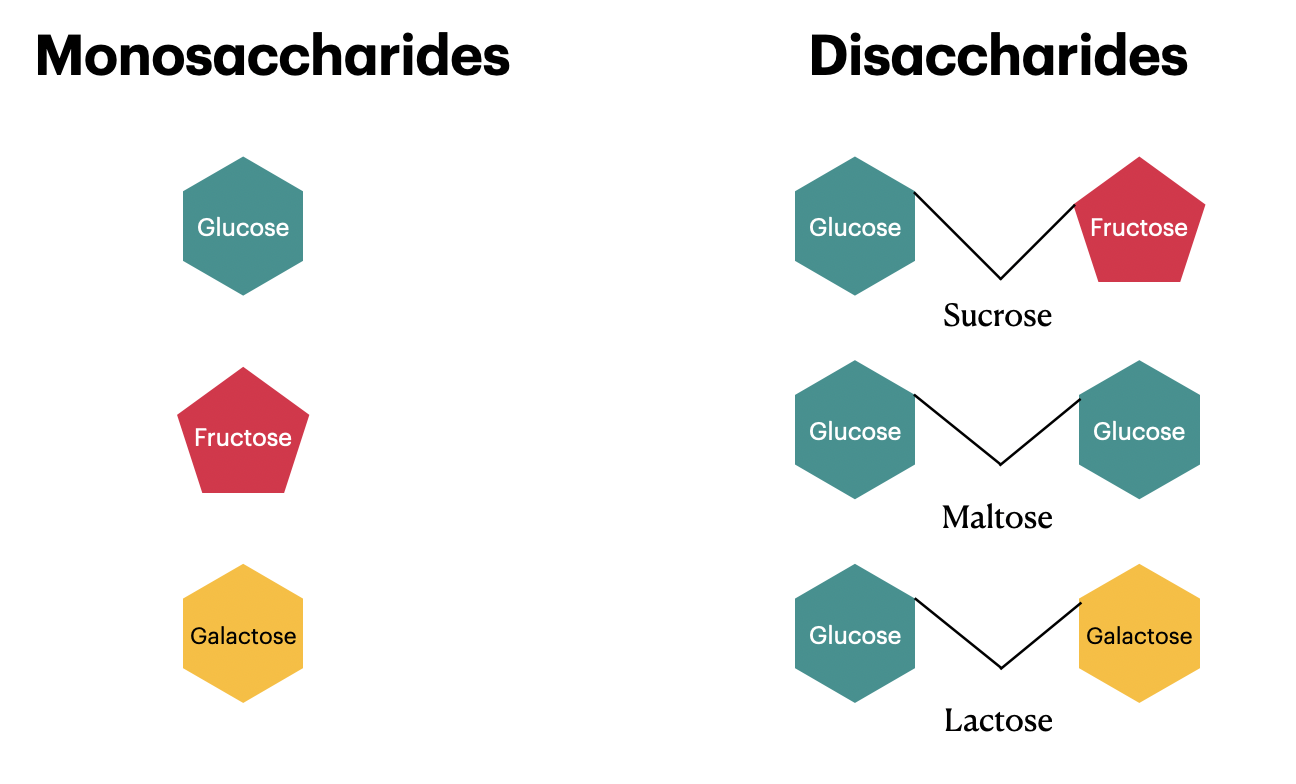Biohack Your Metabolism In 4 Steps
Let’s talk about metabolism. This is one of my favorite topics, because optimizing metabolism is one of the major goals of the best diet and natural biohacking recommendations. The ultimate purpose of our metabolism is to create energy we can use.
Sugar and the metabolic processes that break it down play a vital role in how your body produces energy. While one perspective suggests that that “all sugar is just sugar,” there is scientific evidence showing there are vastly different metabolic processes for different types of sugar. These distinctions are incredibly important when it comes to biohacking your metabolism!
The three disaccharides (double molecule sugars) we hear about most are: sucrose (table sugar), maltose (found in beer), and lactose (from milk). They are made up of different combinations single molecule sugars called monosaccharides: glucose, fructose, and galactose. Each of these molecules are used by the body in unique ways.
While we can create energy from each of these molecules, it is important to note the major differences in how they are broken down. When breaking down fructose, there is actually a large dip in cellular energy, which is a survival adaptation leading to energy and fat storage, an increased appetite and thirst, and a decreased metabolism. If you’d like to deepen your understanding about the process of fructose metabolism, I recommend reading Dr. Richard Johnson’s book, The Fat Switch . In the book, he describes how fructose is used by animals when preparing for hibernation or migration to store and conserve energy. Squirrels, birds, and bears for example, will start eating more fruit in the fall to help them gain weight before winter. While this process is helpful in a survival situation, in the modern world, it has led many people down the path of:
Obesity
Fatty Liver
Insulin Resistance
In comparison, when we break down glucose, we still lose a little energy in the process, but there is a feedback mechanism that keeps the energy from dipping low enough to cause the detrimental effects listed above that occur with excess fructose consumption.
As with everything, dosage matters and makes the poison. Eating a small amount of fruit wouldn’t cause someone to experience the large dip in cellular energy and negative metabolic effects that drinking a coke would. And, it’s important to factor both the amount of fructose consumed and the rate of absorption in making a difference in how drastic these effects can be. For example, drinking a soda on an empty stomach would cause the worst effect, while eating fruit with a meal would create the least effect, because the fructose in the fruit would be absorbed much more slowly.
If the case against fructose wasn’t bad enough, its metabolism also creates a high amount of oxidative stress that causes:
Decreased fat burning
Increased fat storage
Insulin resistance due to inflammation of the pancreatic islet cells
So, all I have to do is avoid fructose, right?
Not quite…
We also make fructose from glucose under certain circumstances:
excessive salt intake (as a way to preserve water- read here on how water is created from fat, often used as a survival adaptation)
dehydration (again, as a way to preserve water)
And to make things a little more complicated, your susceptibility to creating fructose from glucose also depends on your current and past health status. Someone who already has metabolic syndrome – as defined by at least 3 of the below symptoms – will continue to create fructose from glucose even if they cut out sugar but continue to eat carbs. That’s why a lower carb diet is so effective for people with metabolic syndrome. However, a person without these symptoms could eat carbs all day and not create high amounts of fructose because they are still metabolically healthy.
Symptoms of Metabolic Syndrome:
Elevated blood sugar
Elevated blood pressure
Elevated waist circumference
Elevated triglycerides
Low HDL
How to biohack your metabolism in 4 Steps:
Remember, sucrose is table sugar- the same that is seen on a label as “sugar” added to many processed foods. Often, high fructose corn syrup (HFCS) is used in many foods as a cheaper, sweeter alternative to sugar. Both aren’t viable options for a healthy metabolism. In fact, agave, which is often promoted as a healthier alternative, has an even higher level of fructose. To reduce the negative effects of fructose and biohack our way to better health, we ultimately want to take these steps:
Reduce fructose intake (avoid added sugars and juice, whole fruit is ok)
Moderate carb intake and choose whole carbs over processed carbs
Avoid excess salt (especially from processed foods)
Drink plenty of water (typically at least 64oz daily)

